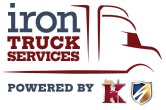Update: Efforts to Increase the Numbers of Women in Trucking Show Success
Two years ago, we posted a blog about the number of women working in trucking. At that time, Congress was considering a bipartisan bill that sought to increase the number of women employed in that industry. Supported by the American Trucking Association (ATA) and many others, it was, in part, a response to a large shortage of truck drivers. At the time, women made up just 10 percent of the 3.5 million U.S. truck drivers, and many saw them as a potential resource for filling much-needed positions.
Since then, the Promoting Women in Trucking Workforce Act has been signed into law and placed under the direction of the Federal Motor Carrier Safety Administration. Last year, the agency established a Women of Trucking Advisory Board (WOTAB) to execute key aspects of the new law. Made up of women from all sectors of the industry, the Advisory Board includes representation from trade associations, carriers of all sizes, independent owner operators, training facilities, and others. WOTAB is specifically tasked with reviewing and reporting on policies that support women currently employed in trucking, and that remove barriers to women who wish to enter the industry.
The strong government and industry support for the recruitment of women drivers shouldn’t come as a surprise. Successful outcomes mean that more women will have good-paying jobs, and that there are more essential workers to transport the goods and services that are critical to our nation’s economy. Recent data suggest that more women are starting to see trucking as a viable career option.
Every year since 2016, the nonprofit association, Women In Trucking (WIT), conducts a survey to track gender diversity in trucking. Based on information gathered over a 4-month period from trucking companies, private fleets, and other businesses, the WIT Index has become the “official industry barometer” of women’s employment in the transportation industry.
The 2022 Index results show that since 2019, the number of women drivers has increased from 10 percent to 13.7 percent. While this is still a low number, it is a respectable increase, with the addition of almost 130,000 women drivers over a 3-year period. It’s clear that the trucking industry needs every one of these new drivers.
At the ATA’s annual Management Conference & Exhibition last October, the association’s Chief Economist, Bob Costello, reported that in 2022, there were nearly 78,000 unfilled driver jobs. This is a whopping 28 percent increase from 2019, when the ATA reported a 60,800 shortfall, and it is the second highest number of vacancies the industry has ever seen. In order to meet this need, the ATA estimates that over the next 10 years, 1.2 million new drivers will need to be hired.
It is important to note that, as a whole, the industry is quite welcoming to women. According to the WIT Index, 39.6 percent of leadership positions in the transportation industry are filled by women (leadership is defined as someone with supervisory responsibilities). While not in the literal driver’s seat, these employees demonstrate an openness to gender diversity in the companies in which they work.
Truck driving can provide good pay, independence, and job security, all of which should make the profession an attractive opportunity for many women. Over the next few years, it will be interesting to see if WOTAB and others can address the unique challenges that make women hesitant in considering this career, and whether those efforts will have an impact in decreasing the shortage of truck drivers.




